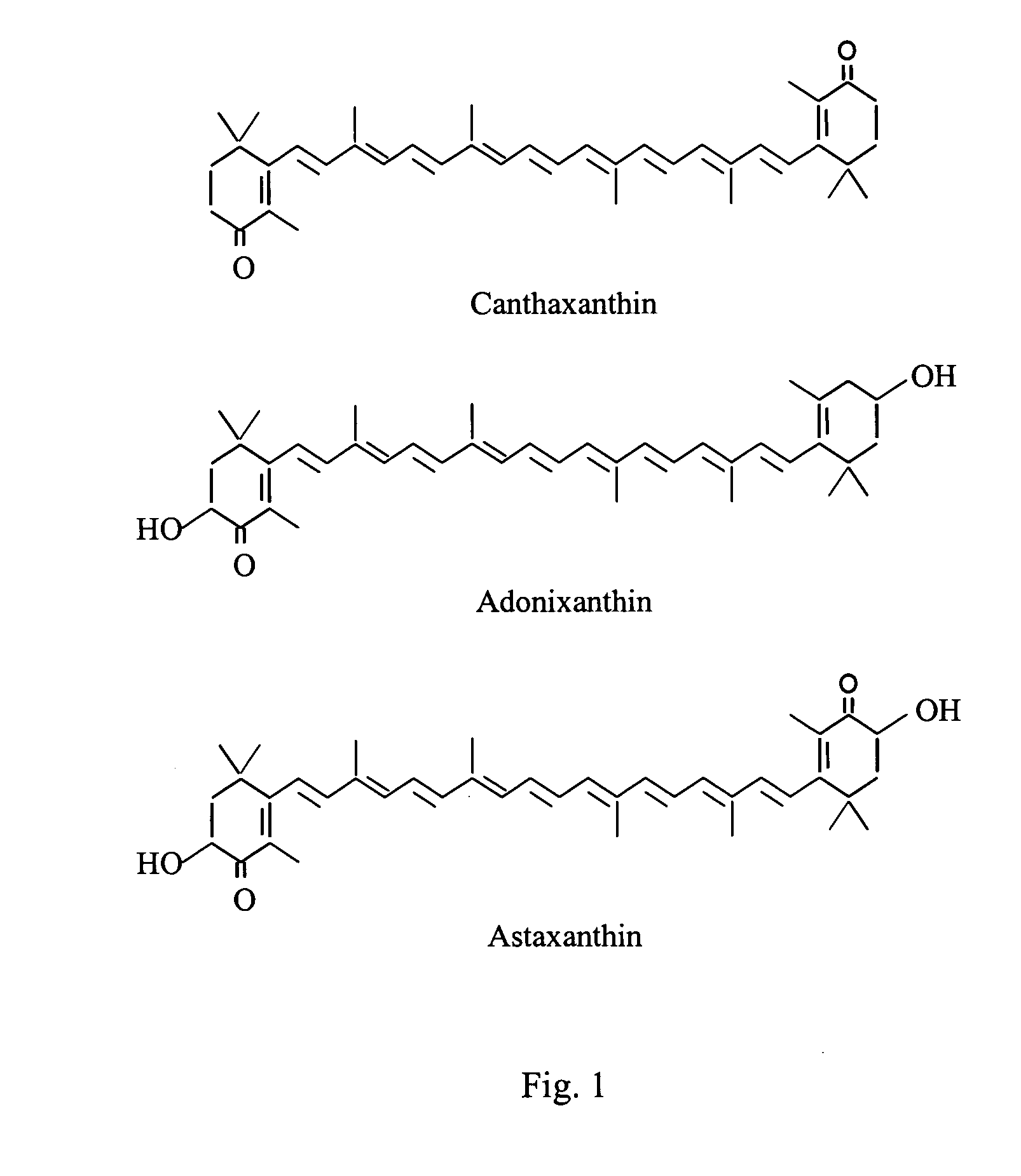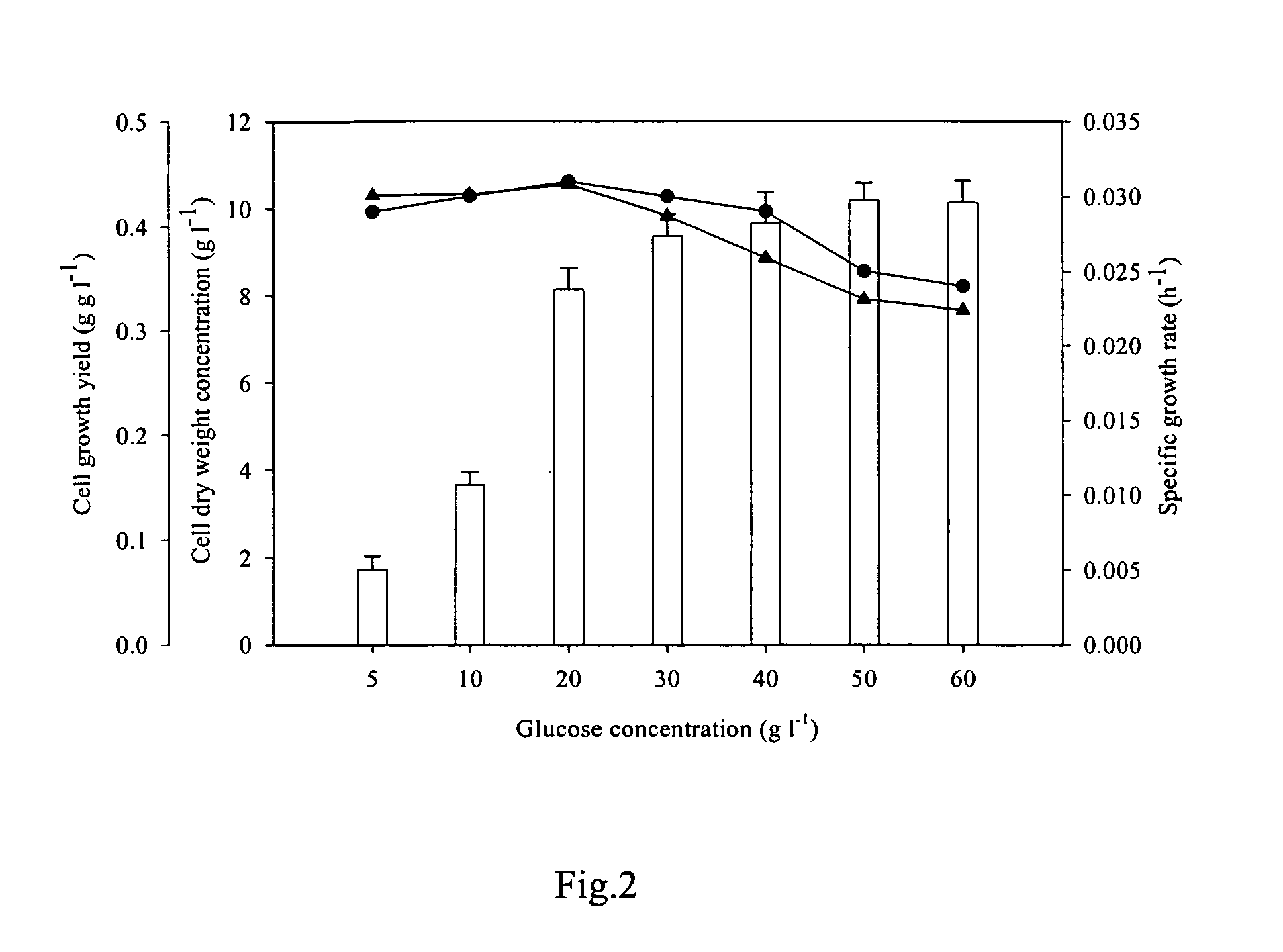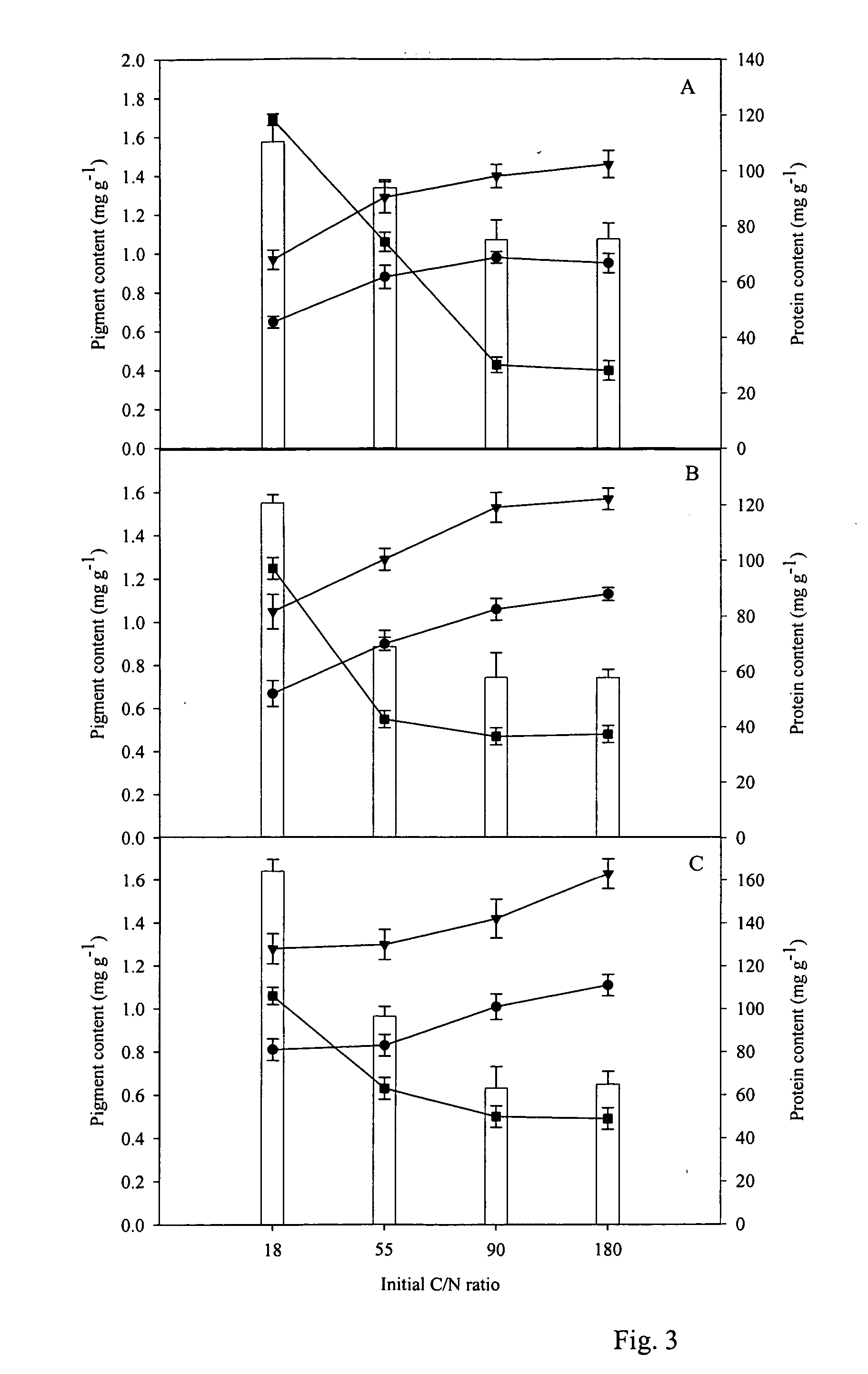Methods for production of astaxanthin from the green microalgae Chlorella in dark-heterotrophic cultures
a technology production method, which is applied in the field of production method of green microalgae chlorella in dark-heterotrophic cultures, can solve the problems of high cost of lighting, high cost of astaxanthin, and high price of astaxanthin, and achieve excellent growth and high-yield astaxanthin production
- Summary
- Abstract
- Description
- Claims
- Application Information
AI Technical Summary
Benefits of technology
Problems solved by technology
Method used
Image
Examples
Embodiment Construction
[0008] In accordance with the present invention, any known process for the production of carotenoids, especially astaxanthin, by Chlorella is enhanced by conducting the process in heterotrophic culture, in the dark, when the carbon source quantity is increased. Increasing the carbon source quantity, in this connection, means establishing a carbon / nitrogen ratio of at least about 5, and preferably at least about 90. The C / N ratio in the media heretofore employed did not exceed about 18. Any known carbon source such as glucose, acetate, lactose, fructose, sucrose, maltose, mannitol or mannitose can be employed for this purpose although the use of glucose is presently preferred.
[0009] The invention is demonstrated in the following examples.
Methods
The Microalga and Culture Conditions
[0010] The green microalga, Chlorella zofingiensis (ATCC 30412) was obtained from American Type Culture Collection (ATCC, Rockville, USA). The alga was maintained in the modified Bristol's medium (refe...
PUM
 Login to View More
Login to View More Abstract
Description
Claims
Application Information
 Login to View More
Login to View More - R&D
- Intellectual Property
- Life Sciences
- Materials
- Tech Scout
- Unparalleled Data Quality
- Higher Quality Content
- 60% Fewer Hallucinations
Browse by: Latest US Patents, China's latest patents, Technical Efficacy Thesaurus, Application Domain, Technology Topic, Popular Technical Reports.
© 2025 PatSnap. All rights reserved.Legal|Privacy policy|Modern Slavery Act Transparency Statement|Sitemap|About US| Contact US: help@patsnap.com



